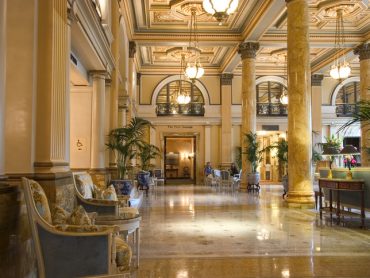Doing the VIP Treatment Right
Category : Archive
Date : August 8, 2012
As a member of the ‘working hotel team’, I am often given an upgraded room, but rarely am subject to the true VIP treatment. Having recently experienced this at a local winery, I am now more cognizant of the value of these efforts and its implications for repeat business coming from such activities.
First, my VIP experience. I am a regular buyer of Stratus Wines – a boutique winery located in Niagara-on-the-Lake about 90 minutes south of Toronto. My gang of five arrived in the middle of the afternoon and, remarkably, they had set aside a private room for a tasting of six vintages complete with four premium cheeses. They even printed out a personalized menu for the occasion.
Needless to say, I was blown away by their effort taken to make my group feel special. Since I had not expected anything like this, their actions were even more incredible. And there was no sales pitch or expectation of an immediate purchase.
The whole affair prompted me to reflect on the hospitality industry’s approach to the VIP treatment. We tend to throw around this term. When asking personnel about how someone is given VIP status, the response is usually a blank stare, as if the information was either confidential or unknown.
Here is my take on the VIP situation:
1. This is a serious classification and it should not be taken lightly. There should be a clear set of guidelines as to who is given VIP status requiring planning committee level authorization. By making the classification special, it will get the attention it deserves.
2. VIPs should be coded so the front office knows why. Some are obvious, but giving front desk some information as to why the person has reached this status might be useful to ensure that their stay with you is perfect.
3. Your VIP amenity package should be highly personalized. In today’s world of custom printing, any correspondence and all presentations should be directed at the individuals and not neutral or unspecific.
4. Don’t ask for the order if you are VIP-ing a customer. There is time afterwards. Remember, this is an opportunity to demonstrate your thanks for their support.
5. Be memorable. A personalized, printed menu, which costs pennies, is worth more than complimentary first-growth claret. Creativity and extra touches count more than their physical value. Further, high priced items could be considered a bribe and might be frowned upon, or even illegal to accept.
6. It’s personal. Show you care. Don’t delegate the responsibility for ‘meet and greet’ to another manager. If it’s after hours then make an appearance at another time during the individual’s stay to reinforce the personal impression.
7. Follow up all VIP visits. Learn from what you have done. Refine your technique and enhance your presentation.
8. Diarize your VIP activities. Make sure that what you did is on the guest file so that you do something different and equally exciting for the next time.
9. Add a ‘loot bag’ on the way out. It costs very little to add a ball cap with your logo and a water bottle for a car. If a particular VIP has children, an age-appropriate ware with your logo makes sense, too.
10. Most importantly, to a certain extent, every guest on your property is a VIP. While some guests may be identified for a special service or amenity, all guests deserve to be treated with professionalism and care.



